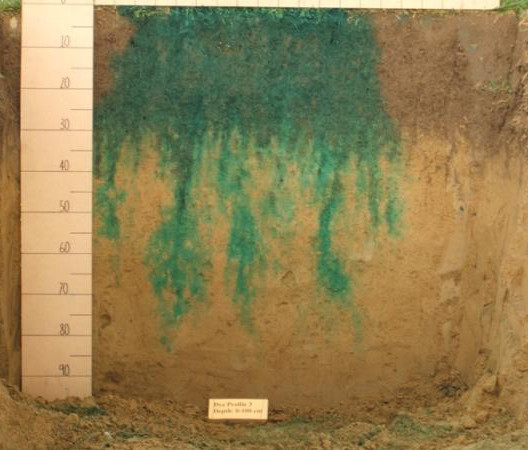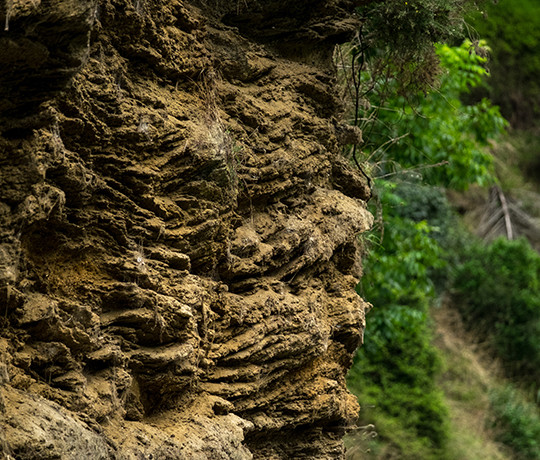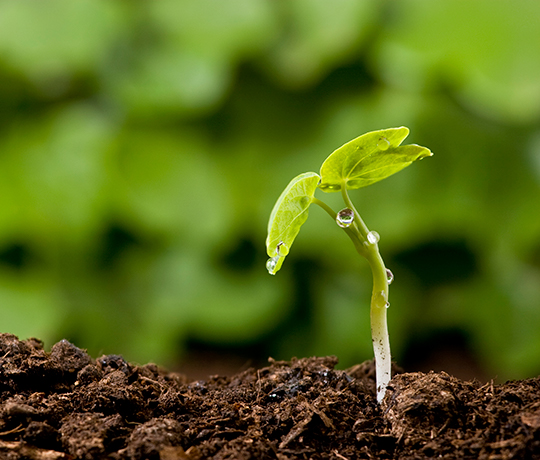Soil water: liquid of life
Soil needs water to function
Soil needs water to function. Water in soil – also termed 'soil solution' – is the medium of transport for transferring nutrients, not only from one micro-site to another, but also from one mineral surface, plant root or soil microbe to another.

Soil water is the term used for all fluids present in a soil apart from 'crystalline’ water bound within soil minerals.
The main sources of water in soil are groundwater (water that rises against gravity from the groundwater table up the soil profile) and precipitation (water that infiltrates and percolates from the top- into the subsoil.
Under normal conditions water makes up 15% to 35%1 of the soil volume. This means that 1 cubic metre of soil can contain up to 200 litres of water2. But, as we all know, large variations occur depending on season, land use and environmental conditions, such as the amount of rainfall a soil receives.
Texture and pore space determine the flow of water through the soil profile. This flow pattern is not uniform in most cases: compacted areas tend to prevent water movement, whereas root channels promote vertical discharge. Water that flows through the soil profile can either follow gravity to leave the soil as seepage water or resist gravity, instead, and remain retained.
A blue tracer substance has been used to illustrate the pattern of water infiltrating a soil. Copyright: Manaaki Whenua – Landcare Research.
Retained water forms an important moisture reservoir and exists in two forms: adsorbed to the soil matrix, or held in the capillary space between individual soil particles. To access this reservoir, plant roots need to overcome binding forces that keep the water in place. Often water retained in small micropores remains unavailable because the binding forces are simply too strong for root suction to overcome.
Soil water becomes most available if soil comprises an intermediate range of pores (0.2 to 50 µm)3. This means that silt soils provide a favourable texture, where the water is retained in the pore space but is not as strongly bound. As a result, roots have to use less suction, and the water becomes plant-available4.
However, soil is not just a moisture reservoir for plants. Soil significantly contributes to the global water cycle by filtering pollutants from the soil solution and providing purified water for groundwater recharge. Water is the liquid of life – in and around soil.
Water for weathering
Water is a powerful force of soil formation. Under dry conditions, its absence causes soluble salts and carbonates to accumulate and dense subsoil horizons to form. Later on, when soil moisture levels rise again, water might stagnate above or below these dense horizons. Soils that are saturated with water have a low oxygen level which, in turn, affects soil chemistry and limits microbial activity.
On the soil surface, water is also a cause of soil erosion. During heavy rainfall, water is capable of dislocating soil particles from one location to another. Often, when the soil surface has remained uncovered, soil grains erode and wash into streams and are carried away. Read more on soil erosion in our section on the state of NZ soils.
More generally, the absence or presence of water in soil determines soil’s biological, chemical and physical weathering. Indeed, water can wash soil away. But in most cases water lets soil develop and life flourish, above and below ground.
1 Schaetzl & Anderson (2005). Soils. Genesis and Geomorphology. Cambridge University Press, p. 10.
2 Bartz et al. (2015). Soil Atlas 2015 - Facts and figures about earth, land and fields. Heinrich Boell Foundation. Institute for Advanced Sustainability Studies. Potsdam, Germany. 4th edition.
3 Scheffer & Schachtschabel (2010). Lehrbuch der Bodenkunde. 16th edition, p. 181.
4 Scheffer & Schachtschabel (2010). Lehrbuch der Bodenkunde. 16th edition, p. 234.




